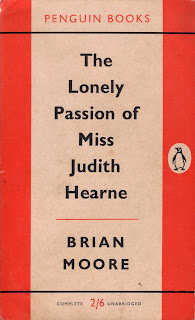
Bottoms Up
Jock Carroll
Covina, CA: Collectors Publications, 1967
Strange to think that this novel, which receives no mention in The Oxford Companion to Canadian Literature, sold something close to one million copies. It is an astonishing figure, one that comes from the author himself - and, Jock Carroll's reputation being what it is, I don't doubt it for a second.
Carroll was a very good journalist and a gifted photographer, but not much when it came to writing fiction; it's no great loss to Canadian letters that Bottoms Up was his only novel. That said, this is a pleasant enough read, capturing something of a heady time when magazines were flush with cash and booze flowed freely. A fish out of water story, it centres on Arthur King, a Swampy Cree from the shores of Hudson Bay and his zany adventures as a photographer for Light, a New York-based magazine. Along the way he encounters tough-talking journalists, a prostitute with a heart of coal and a human cannonball who fancies himself a great painter. But none are so interesting as Gloria Heaven, a character modelled closely on Marilyn Monroe. Carroll famously spent several days photographing the screen goddess near the start of her career, shots that were later published in Falling for Marilyn: The Lost Niagara Collection. His writing about the encounter suggests little embellishment; Gloria and Marilyn share the same background, body, behaviour and reading material (Thomas Wolfe, The Prophet and The Thinking Body by Mabel Ellsworth Todd). Conversations that Carroll says he had with Monroe are also found in the novel.
According to the author's son, Carroll shopped Bottoms Up around, finally turning to Olympia Press after he'd exhausted the North American houses. Maurice Girodias accepted the manuscript, but only after it had been spiced up. The paprika is easily seen, a light sprinkling of ribald talk here and there, without any great concentration. There are no sex scenes in Bottoms Up, and I think only two passing references to the posterior. It's not at all surprising that the novel holds the distinction of being the only Canadian work published by the press to have escaped the censor.

Olympia published Bottoms Up in 1961 as part of the Traveller's Companion Series, but the real sales would have begun three years later when it appeared in England and the United States as The Shy Photographer. Handsome hardcovers from Macgibbon & Kee and Stein & Day where soon followed by mass market paperbacks.
'Candy with a camera!' proclaims the Bantam edition. Well... not really. To truly appreciate where Carroll's talents lay, I suggest Falling for Marilyn and Glenn Gould: Some Portraits of the Artist as a Young Man (the focus of Glenn Gould Estate v. Stoddart Publishing Ltd., Carroll's posthumous triumph).
Object: My copy was pirated by Collectors Publications, run by the dishonourable Marvin Miller, the very same gentleman who two months earlier ripped off John Glassco's The English Governess as The Governess.
Access: Very good copies of the first edition are generally priced at between C$30 and C$50, twice that of the Collectors Publications edition. As The Shy Photographer, it's pretty thick on the ground - paperbacks from Panther and Bantam, the Macgibbon & Kee and Stein & Day hardcovers - all can be bought for as little as C$5. The Stein & Day edition is the most interesting as the first and only book produced as part of its aborted 'Olympia Press Series'.
Canada's Olympians (Part I)
Canada's Olympians (Part II)
Canada's Olympians (Part III)












